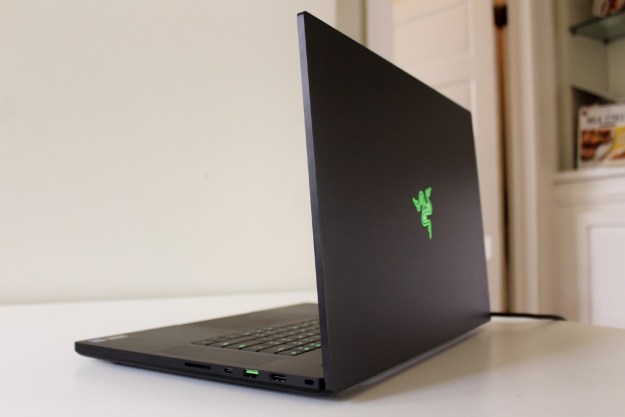As multi-color LEDs find their way into every piece of PC gaming equipment, brands are looking for new ways to expand their ecosystems and include new products and software. Razer is taking things a step further with Project Ariana, a projector that takes the peripheral maker’s Chroma ecosystem and spreads it out across your wall.
It’s tough to explain exactly how Project Ariana looks and works, so the pictures and videos we’ve included will hopefully clear up some of the confusion around this impressive, and unique, offering.
The experience
When we first heard about it, we expected Ariana to look like a Youtube where the colors at the edge are stretched out and diffused, to make up for a vertical phone video. In reality, the clarity is much higher, and truly extends your field of view, keeping tall buildings and panoramic environments in view as you spin, jump, and fight. It’s hard to explain, but there’s a serious wow factor involved when your vision is filled with the game you’re playing.
The fast-paced, first-person action of Shadow Warrior 2 made a perfect demo for the ambitious project. As the sword slashed across the screen, the streaking of the blade would continue to follow outside the display panel and onto the walls. In combination with Philips Hue devices, which now connect to Chroma, playing the game became a completely immersive experience, in a way we’ve yet to see from traditional displays.
It also proved useful in a number of situations, as enemies outside the bounds of the main screen could be seen in the corners, and the timing of the blade was more obvious as it continued off the edge. One could imagine Ariana giving a better look at upcoming turns in a racing game, or revealing an enemy before they can get a shot off on you.
It’s clear that Project Ariana is going to work better for some games than others. The fluid motion and colorful skylines of Shadow Warrior 2 lent themselves well to the expanded field of view, and we could imagine racing games and epic action titles sharing that trait.
How does it work?
Project Ariana is a bit more complex than a standard projector. It uses two depth-sensing cameras of Razer’s own design to scan your play area, starting with the display. It blocks out any light that would splash on your screen, then calibrates itself based on where you’ve set it up. The fisheye lens helps spread out the projection across a huge area, without sitting very far away. And you won’t mind if it has to sit out, because the stringray-shaped housing is attractive and elegant, straying from Razer’s typical matte black design process with a semi-gloss white shell.
This technique is closely related to one called “foveated rendering.” By keeping the highest quality output in the center of your eyes, while using less precise graphics around the screen, Ariana can create the illusion of a fully immersive and detailed experience. Your eyes actually see at a higher resolution at the focus than they do in the periphery, so as long as you’re watching the screen, you won’t notice any abnormalities caused by the projector or obstacles on the wall.
Aside from immersion, Ariana might also provide awareness — and not just because of an expanded field of view. Razer said its Chroma compatibility could be used to provide awareness of in-game events, most likely by flashing certain colors along the edge of your vision. This makes a lot of sense. Most first-person shooters already do something like this to indicate the direction of enemy fire.
The final word
Project Ariana is still very much a concept, but it’s clear from our conversations with Razer that it’s a product the brand is excited about, and is considering for release down the road — but not without getting some feedback.
Our feedback? It’s sweet. The added immersion and field of view is super fun, and sometimes useful for spotting enemies or objectives. It’s definitely not the kind of product everyone would want, but it’s clear there’s a market in the high-end PC gaming crowd that wants the biggest, flashiest new toy, and Project Ariana fits the bill.
Highs
- Immersive experience
- Unique offering
- Self-calibrating
- Attractive design
Lows
- Works better with some games than others
- Niche market
Editors' Recommendations
- Is this Razer’s Steam Deck killer?
- I sat in Razer’s new gaming chair, and my back loved it
- 5 ways to take your PC from boring to beautiful
- The best gaming laptops from CES 2023: ROG, Alienware, Razer, and more
- Razer Blade 16 and 18 hands-on review: not afraid to go big




